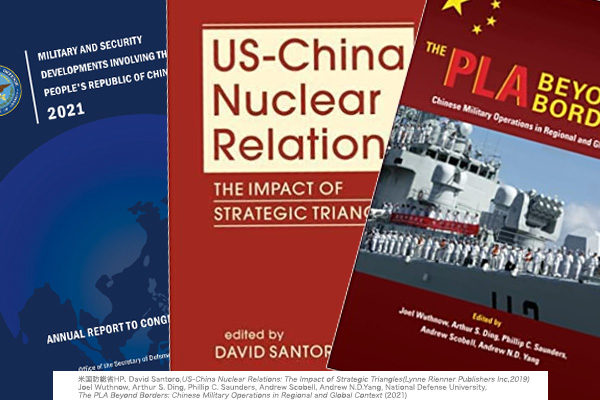On November 3, the U.S. Department of Defense released this year’s report on “Military and Security Developments Involving the People’s Republic of China.” Japanese media emphasized China’s likely intention to have at least 1,000 nuclear warheads by 2030 but apparently failed to analyze why China seeks to increase nuclear warheads.
Attack targets shifting from Countervalue to Counterforce
Nuclear attacks on metropolises like New York and Los Angeles are called countervalue, while those on military facilities are termed counterforce.
China’s nuclear strategy has focused on countervalue. But nuclear strikes at U.S. metropolises and citizens in response to U.S. support for Taiwan in a cross-strait conflict may cause hesitation even as a deterrent, deviating from any flexible response strategy. Then, the readiness to attack U.S. intercontinental ballistic missile (ICBM) silos may be adopted as a reliable deterrence.
To this end, high attack precision is required. A global satellite navigation system to improve attack precision had been insufficient. But China completed the Bei Dou navigation satellite system in June 2020 to cover the whole world, enabling high precision silo attacks. A certain number of nuclear warheads will be required to cover all missile silos in the U.S. The requirement may be behind the apparent Chinese intention to increase the number of nuclear warheads from about 250 at present to 1,000 by 2030.
Coming age of Three nuclear Kingdoms
The U.S.’ nuclear strategy has targeted Russia alone because the number of nuclear warheads in China has been an order of magnitude smaller than that of the U.S. or Russia. If the number of Chinese nuclear warheads reaches 1,000, however, the U.S. will have to subject not only Russia but also China to its nuclear strategy and arms control negotiations, ushering in an age of big three nuclear powers.
Last year, a Washington thinktank head asked me a written report about what to keep in mind if China is to be included in U.S.-Russia nuclear arms control negotiations. Earlier this year, David Santoro, president of the Pacific Forum, a Hawaii-based thinktank, published a book titled “U.S.-China Nuclear Relations.” In preparation for a military clash with the U.S. emanating from a cross-strait conflict, China is seeking to possess flexible, highly reliable nuclear deterrence.
Meanwhile, “The PLA Beyond Borders” published recently by the U.S. National Defense University Press analyzes in Chapter 2 that the People’s Liberation Army’s sealift/airlift and logistic support capabilities to enable its invasion of Taiwan are still insufficient. We should give our attention also to such cool analysis by military experts.
Fumio Ota is a senior fellow and a Planning Committee member at the Japan Institute for National Fundamentals. He is a retired Vice Admiral of Japan’s Maritime Self-Defense Force.


